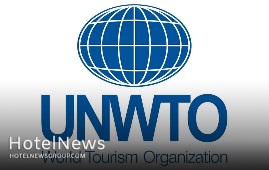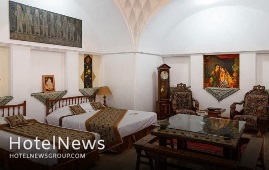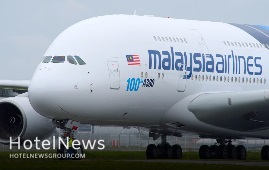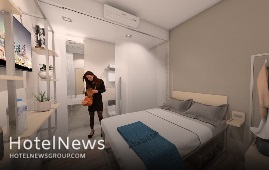
The recovery in the leisure sector is imminent, and we argue that small groups aren’t far behind given that ‘revenge travel’ also implies a strong yearning to reconnect and congregate. A return to healthy numbers won’t be evenly spread across all hotels, though. It will favor those properties and those organizations that are already prepared for a diverse range of ramp-up scenarios, with others leaving revenue on the table by not having plans in place prior to this next phase. While hotels could hardly have predicted or prevented the advent of COVID-19, what we’ve witnessed in the latter half of 2020 is an industry that’s largely reactive to macroeconomic forces. Many operators have hinged their hopes on a near-complete reversal to 2019 demand levels and guest expectations without any earnest consideration for structural innovation and becoming more adaptable to the increased volatility in the market. Luckily, there are a few shining stars that highlight where hospitality needs to be for the decade ahead, and we’re excited to present one such case herein. Newport Hospitality Group (NHG) is a management company that’s been operating for 30 years and now has over 50 managed properties in its portfolio spread all along the Eastern Seaboard. Most fascinating for our current conversation is that the organization has some inherent ‘antifragility’ (to borrow a term from the brilliant statistician and option trader Nassim Taleb) in that it thrives relative to its comp set not only during good times but also during periods of economic turmoil. Upon reviewing their annual RevPAR growth metrics, they’ve beaten their respective markets in every year since 2005. Emphasizing this is that during the calendar year of 2020 NHG dropped 7.9% less than the US RevPAR average and the company also added 10 properties to its portfolio. This echoes their relative CAGR for the recession of 2008-09 where they also substantially beat the market. Success Starts at the Senior Level In trying to decipher the secret to the longstanding NHG playbook, we had an extensive discussion with Wayne West III, NHG’s President. He explained that success during turbulent times hinges upon decisive attention at the senior level combined with a thorough comprehension of the roles and responsibilities for the onsite operator, the corporate office team and the owner. Finding the best alignment amongst these entities – which may or may not have different goals – is an initial step that is often overlooked. So much time is spent in planning meetings and getting approval for changes and new initiatives that operations can easily get bogged down through ‘decision by committee’. In particular, hospitality is more exposed to this problem than other industries given our highly vertical organizational structures and lack of monetary empowerment at the property level. These types of inertial situations can easily be exacerbated by conflicting visions and orders stemming from the three-headed, ‘Cerberus-like’ discord amongst the owners, brand and management company. The key is to find a balance of responsibilities. “In many ways, the hotel industry’s current situation is like a street race,” quipped West as he explained how immobility can compromise a hotel’s success. “You don’t start revving your engine when the light turns green. You rev in neutral so that you can fly out of the gates once the countdown hits zero. This resembles the state of many hotels as we gear up for a roaring Q3 and Q4. At NHG, we established a playbook for swiftly reacting to hard times even before the Great Recession to the point where it’s now baked into our culture. All our managed properties have a clear chain of command and are staffed up to handle a surge of both transient guests and group RFPs.” Indeed, one case where having alignment at the senior level is mission critical pertains to the reemergence of groups, starting with reunions, corporate retreats and wedding receptions later this fall in advance of larger MICE-type travel sometime in 2022. With those small group gatherings taking place in the autumn or winter, the planning starts in late spring or early summer, and hotels must have a sales team and group rate plan fully set up to win these contracts. To this end, one reason for NHG’s success versus its comp set in 2020 was because it retained its sales team throughout. This meant that they were fully ready to enter any negotiation with attractive offers and coronavirus-specific programs such as full-floor or section buyouts and operational staff pods to limit cross-exposure. Emphasizing Succession Planning To ingrain the first lesson above, far better than a lengthy deliberation over the best possible approach is to implement a reasonably satisfactory course then act quickly to adjust the plan as market conditions evolve. To enable this ability to pivot, onsite leaders must have a certain degree of autonomy and freedom to act within a proscribed framework. But how do you develop a culture of empowerment? One critical point that West highlighted to that end was succession planning and how many hotels aren’t prepared for a return to normalcy because they furloughed too many of their team members. This is especially evident for sales teams, whereby without key managers kept up to speed on a property’s event capabilities, each RFP cannot be addressed through a preestablished process. This results in teams constantly playing catch-up and reacting week-over-week to new inquiries rather than looking ahead to new initiatives that will advance the hotel’s revenue prospects. To ensure this type of problem never sets in, NHG prides itself on promoting from within and executive retention, with nearly half of their senior teams staying with the company for over a decade and nearly a quarter staying for over 20 years. A sharp focus on retention like this means that the onsite operators are totally in sync with ownership and the corporate office, intrinsically knowing how to implement the latter’s directives and hastily deploy resources to make those changes a reality. “A property is only as good as its GM,” remarked West to close out our talk, succinctly describing how, if the GM gives his or her managers a clear and actionable plan without backtracking or indecisiveness, then success is all but guaranteed. In this sense, nurturing great teams, especially during hard times like the current pandemic, is vital for decreasing conflict and aligning operations prior to periods of increased demand. Particularly at the senior level, the time to make your organization nimble and imbue a clear command structure for rapid action was yesterday. But, with hindsight being what it is, a close second place would be today. It’s never too late to chart a course for a profitable decade ahead, and our hope is that you can learn from this brief examination of NHG to see how you can create a culture of success.
Create: May 8, 2021 Edit: May 8, 2021 Hotel Management
Calling all those looking to discover the outdoors and live with purpose, as owner and developer, Andrew Ashcroft, in partnership with Autograph Collection Hotels, announces the grand opening of the highly anticipated boutique resort – Alaia Belize, Autograph Collection. Spanning over 20+ acres and the first in San Pedro Town to sit on more than 1,000 feet of beachfront access, Alaia Belize is a 155-unit complex operating as the first true four diamond resort on Ambergris Caye. The eco-luxury development will be the first-ever Marriott International property in the country, upholding the high-quality standards of the brand and dynamic marks of the Autograph Collection – celebrating the founder’s passion, thoughtfulness of design, inherent craft and connection with the locale. “With deep family roots in Belize and the hidden gem being my home for over 20 years, I wanted to ensure that Alaia Belize captured the lively spirit, genuine hospitality and friendliness of the destination and locals. My team and I worked closely with the Marriott International team to bring it all to fruition and allow our future guests and owners an opportunity to immerse themselves into the Belizean culture,” said Andrew Ashcroft. “No detail went unnoticed as we wanted to ensure that our travelers will be able to experience a new level of luxury on one of the world’s most photogenic yet untapped destinations. We are now ready to show the world all that Alaia Belize has to offer and take the country to new heights.” Eco-Luxury Aesthetics Situated in the historic town of San Pedro – dubbed La Isla Bonita after the 1987 Madonna’s song about the island – Alaia Belize will allow hotel guests and residential owners to intimately connect with their surroundings as it was designed to stimulate all five senses. With interiors curated by renowned Brazilian designer Debora Aguiar, the boutique resort is meant to invite guests to touch, stay and feel connected to Mother Nature, from the warm and harmonious ambiance, woven textures, natural fibers and touches of greenery. The design-forward hotel features 155 guest rooms and suites, ranging from studios to three bedrooms, with a natural color scheme to complement the stunning oceanfront views. Seamlessly blending the indoor and outdoor settings, the rooms offer an average of 1,200 square feet indoors and almost 900 square feet in open air, per unit. On the residential end, Alaia Belize is comprised of 71 stylish studios, two- and three-bedroom condominiums and eight oceanfront villas. Owners who don’t live full-time in Belize can opt their condominiums or villas into a rental program booked through Marriott International’s reservation system and allow guests to live with a backdrop of deep blue waters. With exterior designs led by International Environments, the branded development features vertical green walls, specialty textured walls and crystal-clear glass windows to not interrupt any views of the tranquil Caribbean Sea and wild tropical foliage. Autograph Collection Hotels advocates for the original, championing the individuality of each of its 200+ independent hotels located in the most desirable destinations across more than 30 countries and territories. Each hotel is a product of passion and a personal realization of its individual founder’s vision, making each hotel singular and special: Exactly Like Nothing Else. Hand-selected for their inherent craft and distinct perspectives on design and hospitality, Autograph Collection hotels offer rich immersive moments that leave a lasting imprint. First of its Kind Experiences Raising the luxury bar in Belize, hotel guests and owners will have full access to first-of-its-kind amenities in the country, including Belize’s first-ever suspended rooftop pool and lounge with 360-degree views, the only luxury resort in Belize with a dive shop that also allows guests to receive a PADI certification onsite, K’in Spa & Wellness Center, a piano bar with a self-playing baby grand piano, kids’ club, adventure concierge, swimming pools with live DJs, branded golf carts and bicycles, and a live art gallery with local weavers, woodworkers and pottery makers to create custom handicrafts for guests to take a piece of Belize home with them. Catering to foodie travelers, Alaia Belize will have endless dining and bar options with five different concepts. Sea Salt will be the crown jewel of the property with fresh catches of the day, high-quality seafood and meat with a Belizean twist. For those looking to enjoy the tropical weather and gorgeous 360-degree views of the Caribbean Sea, Alaia will have a Vista Rooftop restaurant concept with small plate offerings, such as sushi, poke bowls and conch for lunch, dinner and late nights. The beachfront hotel will also have The Deck and Beach Bar restaurant for those looking for an open-air beachside lunch or dinner with local favorite dishes, such as tacos, ceviche, burgers, fish sandwiches, wraps, salads, pizza and classic cocktails. Alaia Belize will also have a Piano Bar to offer an upscale lounge setting for breakfast, lunch, dinner and late-night with small pastries, cocktail snacks and high-end wine and cocktails offerings from Alaia’s very own mixologist. Lastly there is the The Terrace Bar for lunch and dinner with flavorful items, such as burgers, sandwiches, salads, ceviche and more. In true Belizean celebratory fashion, this area of the hotel will have a lively spirit with DJs and in-pools cabanas for a VIP experience. Un-Belize-Able Destination “My team and I had a chance to visit with Andrew Ashcroft at the Alaia Belize earlier this year, while the property was still under construction. I am pleased that the day has finally come to open the doors of this beautiful four-diamond resort on the island of Ambergris Caye. It is a great milestone for the team and the country, as it is a testament of our growth to see high-end brands like Autograph Collection from Marriott International migrating into Belize, elevating our travel scene,” said Hon. Anthony Mahler, Belize’s Minister of Tourism and Diaspora Relations. “The government is fully supportive of hotel developments and legacy projects such as Alaia Belize, and we are incredibly proud of all the positive steps the Belize tourism industry is making to restore the confidence in travel among our international visitors.” In October 2020, Belize officially reopened Philip Goldson International Airport to international visitors for leisure travel. As of January 2021, Belize moved on to Phase 4 of its reopening plan with the full reopening of the overnight tourism sector and allowing visitors to move around the country freely. In December 2020, Belize received a Safe Travel Stamp by the World Travel & Tourism Council (WTTC) in recognition of the country’s enhanced health and safety protocols. To uphold the certification, the Belize Tourism Board created the Tourism Gold Standard program to ensure that all hotels, restaurants and tour operators adapt and maintain health and safety policies, including sanitation practices, social interactions and standard operating procedures while ensuring minimal impact on the guest experience. Known as the hidden gem of Central America and Caribbean, Belize’s clear blue waters and Caribbean culture is home to endless historic offerings, a variety of adventures and a melting pot of cultures. Just moments away from Alaia, owners and visitors can experience more than 200 caves filled with several preserved Mayan Temples, including Xunantunich (the second tallest ruin in the country), lush jungles, rainforest canopies, and archaeological sites including the Actun Tunichil Muknal Cave. For those looking to take a deeper dive and explore the beauty of Belize’s natural underwater locations, Alaia is 600 meters away from the world’s second largest barrier reef and a few minutes away from the ultimate world-class and unrivaled destination – The Great Blue Hole. Ambergris Caye and Alaia Belize can be reached via Philip Goldson International Airport in Belize City. Then, travelers have to take a short 10-minute flight to San Pedro Airport or book tickets for a water taxi. Alaia Belize’s hotel concierge is available to help all guests book travel arrangements.
Create: May 8, 2021 Edit: May 8, 2021 International News
A new report published jointly by WIPO and the World Tourism Organization (UNWTO) on the value of intellectual property in boosting tourism shows how the IP system creates a favorable ecosystem for innovation, entrepreneurship and investment in the sector. The publication, entitled “Boosting Tourism Development through Intellectual Property,” highlights good practices, features case studies and recommendations for policymakers and other tourism stakeholders on how to ensure that creativity, innovation, traditions and cultural heritage in tourism are properly protected and commercialized and that the benefits are shared by all. In a joint Foreword, WIPO Director General Daren Tang and UNWTO Secretary General Zurab Pololikashvili, predict that while the tourism sector has taken a hit during the COVID-19 pandemic, it will recover and “contribute to reigniting hard-hit economies and societies thanks to its capacity to adapt to changes and offer innovative solutions to new challenges.” “In this context, IP rights are powerful tools that can be used to boost tourism development and competitiveness. The IP system is designed to promote creativity and innovation and support efforts by individuals, businesses and other actors to differentiate themselves and their products and services in the marketplace, whether through trademarks, geographical indications, copyrights or patents,” they added. The publication provides practical guidance for non-IP specialists on how to include IP in tourism product development – from destination branding to tourism policies. It shows how different IP rights can be leveraged to raise funds. And it showcases successful experiences and demonstrates how stakeholders around the globe are using IP rights to add value to tourism services and products, as well as to protect and promote local knowledge, traditions and cultural heritage. Through examples of producing cheese, tea, pepper, wine or other products, the publication shows how geographical indications and appellations of origin can be used to support the growth of rural tourism and provide benefits to local communities. To leverage the full potential of the IP system, the report recommends inclusion of IP strategies in national tourism plans and tourism policy strategy for regional and local destinations. Not only does good IP knowledge and management help to make use of the protected intangibles, but it also attracts investments and leverages fundraising opportunities. Finally, tourism authorities are encouraged to raise awareness among tourism and destinations stakeholders on the importance of appropriate IP knowledge and management to foster the sector’s growth in these challenging times.
Create: May 8, 2021 Edit: May 8, 2021 International News
A total of 400 beds is expected to be added to the accommodation capacity of the touristic Yazd province, a local official announced on Wednesday. Ten tourism projects, which are composed of hotels and other lodging centers, are under construction across Yazd province, the official said. “Construction work has been finished on two of the projects, and the rest are complete by 70 to 90 percent.” “200 [hotel] rooms and 400 beds will be added to the accommodation capacity of Yazd when the projects come on stream,” the official said. The central province is usually referred to as a delightful place to stay, or a “don't miss” destination by almost all of its visitors. The city is home to thousands of mudbrick houses that are equipped with innovative badgirs (wind catchers), atmospheric alleyways, and many Islamic and Iranian monuments that shape its eye-catching city landscape. In July 2017, the historical structure of the capital city of Yazd was named a UNESCO World Heritage. Wedged between the northern Dasht-e Kavir and the southern Dasht-e Lut on a flat plain, the oasis city enjoys a very harmonious public-religious architecture that dates from different eras. Yazd is known today for its traditional districts, the qanat system, traditional houses, bazaars, hammams, water cisterns, mosques, synagogues, Zoroastrian temples, and the historic garden of Dolat-Abad. The city enjoys the peaceful coexistence of three religions: Islam, Judaism, and Zoroastrianism. Yazd Jameh Mosque, Dowlatabad Garden, the Yazd Atash Behram, also known as Atashkadeh-e Yazd, Towers of Silence, and adjacent desert landscape are among its tourist sites.
Create: May 8, 2021 Edit: May 8, 2021 Regional News
Malaysia Airlines has become the latest airline to sound the death-knell for the Airbus A380, with confirmation today that all six of its superjumbos would be retired over the coming months. "We are cognizant of the challenges to sell this aeroplane, but we are still looking at ways and means to dispose of our 380 fleet," CEO Izham Ismail said in an online press briefing on Tuesday. "At the moment, the management is convinced that the 380 doesn't fit the future plan." That plan will however see the Malaysian flag-carrier and Oneworld member restart the delivery schedule for its Boeing 737 MAX jets from 2024, although Ismail added "we are also exploring the possibility of taking it earlier."Malaysia Airlines aims to have 83 aircraft in total by 2025, with the beleaguered carrier aiming to break even in 2023, in line with a full recovery of demand for air travel. Malaysia Airlines was among Airbus' final customers to sign up for the superjumbo, taking its first delivery in 2012 – the last, which arrived in 2013, was the 100th A380 produced. The A380's sported eight open first class suites (later rebranded as business suites) at the front of the lower deck, with 66 business class seats (in an outdated 2-2-2 layout) on the upper deck and 420 economy seats spread across both decks, with children under 12 controversially banned from the small upper-deck economy cabin.The viability of the airline's A380 was often called into question, and at various stages over recent years Malaysia Airlines has considered measures such as selling off the double-decker jets or spinning them out into a seperate airline which would charter the A380s to bring Muslims across south-east Asian on the Hajj and Umrah pilgrimages to Saudi Arabia. "The aim is to establish an air transport system and infrastructure dedicated for Hajj and Umrah for Muslims not just from these three countries but also other ASEAN countries" Ismail remarked in February 2019, adding that the new airline would be called Amal. Less than two weeks ago, Etihad Airways CEO Tony Douglas announced the Gulf carrier would keep its ten Airbus A380s grounded "indefinitely", admitting the superjumbos – adorned with the extravagant three-room Residence suite and nine spacious first class Apartments – were "a wonderful product, but they are no longer commercially sustainable."(Douglas also dropped the bombshell that Etihad would axe its entire Boeing 777-300ER fleet, charting a future with the fuel-efficient Boeing 787 Dreamliner and Airbus A350 to become a smaller and more streamlined 'boutique' operation.) Air France and Lufthansa have also called an end to the Airbus A380; Qatar Airways will retire five of its ten A380s, but the fate of the remaining A380s remains in limbo. However, Qantas and British Airways both intend to bring their 12-strong A380 fleets back as demand for international travel rebounds. "We think we will reactivate all of the A380s," Qantas CEO Alan Joyce forecast last month, although he doesn't expect they'll all return to the skies until demand for international travel reaches 2019 levels "in 2024." British Airways' CEO Sean Doyle is of a similar mind, remarking in March 2021 that the A380 "is in our plans for the future rebuild of the airline – although he allowed that "exactly when we will put the A380 back into service is something that we’re not clear on." As for A380 champion Emirates, airline president Sir Tim Clark believes there's plenty of life left in those superjumbos. "The A380, of which we have 118 at the moment and five more on delivery, will continue in the plan until the mid '30s," Clark predicts, at which point they'll be fully replaced by the Boeing 777X. By the end of this decade and the beginning of the next, Emirates' heavy-duty fleet strategy will involve "using the A380s on the trunk routes, barreling through from east to west and north to south... with the 777X gradually slipping in to replace the A380s that eventually retire."
Create: May 7, 2021 Edit: May 7, 2021 International News
At a time when many of the world’s events continue to be plagued by COVID-19, making plans even a week in advance may seem difficult, much less 10 years into the future. Nearly overnight, the dialogue shifted from “where to for lunch?” to “can you hear me?”. And as hotels emptied out and travel restrictions drag on, many may wonder, where lies the future of hotels? To answer this question, it is first important to recognize that the hotel sector does not exist as an individual silo, but one which forms part of a much wider network: the ecosystem of how we live and work. The cities in which we live today are a reflection of how humans have shaped our environments to fit our social and economic needs. For generations, urban agglomeration had been the standard of cities, and central business districts (CBDs) thrived as we commuted between living in one area and working in another. Accordingly, hotels have typically focused on serving transient international or regional visitors, primarily playing one of two roles: a place to sleep and meet during our business travels, or a place of respite for our leisure getaways. Today, rising interest in (semi-) permanent remote working and a greater desire to live outside of high-density urban areas may signal yet another impending change in the way we live and work. Could deurbanization or decentralization continue on this trajectory – and what would that mean for hotels? In a Cushman & Wakefield webinar, Richard Pickering, Chief Strategy Officer, EMEA and Borivoj Vokrinek, Strategic Advisory and Head of Hospitality Research EMEA from Cushman & Wakefield, traced the paths of how our societies and hotels have evolved, from their very beginnings to where they could be in the future. Blast from the past: The evolution of travel, from immobile to transient lifestyles Since the early days of civilization, the structure of our society has dictated where we lay our heads every night. When humans lived in self-sufficient tribes and settlements, there was no need to travel or sleep anywhere other than in our own beds; while as society progressed, business travel dominated as merchants travelled for trade. And then, with higher disposable incomes, more free time, rising globalization and the internationalisation of trade, there came the birth of mass leisure and business travel. Clearly, humans have become increasingly mobile – and the advancement of technology will only continue to push us towards this trend. Similarly, the role of accommodation providers has also evolved immensely with our changing social and technological landscape. From being a place for shelter and food to becoming a place to meet and then emerging as a provider of experiences, hotels have always evolved alongside our society and the cities in which we live. In today’s context, our ‘social awakening’ has brought rising calls for better work-life balance and a heightened desire to travel and ‘unwind’. To perpetuate this image, hotels have taken on an additional role: a promoter of one’s social status, driven by the growing prevalence of social media. Yet, this evolution will not end there – with our growing mobility, the role of hotels will only continue to expand to meet our transient needs. “There’s no virtual pivot for hotels,” Pickering emphasized. As our society and cities continue to evolve, so will hotels. ‘The variable impact (of COVID-19) on different sectors’ – C&W Webinar Part 1 of 2: Evolution of our cities and what it means for real estate, presented by Richard Pickering. Note: The relative positionings are for illustration purposes only. Swimming against the current – the rise of remote working Our cities of today, however, have been far from perfect, in fact, some may even argue that urbanisation in the developed world has become a myth. “In city centres, centralized demand, when combined with scarce supplies, pushes up rents for businesses as well as housing costs. [Meanwhile,] increasing city sizes means increasing commute times, which reduces free time and worsens pollution – all while our creaking infrastructure amplifies the penalties of distance,” Pickering suggested. It is unsurprising, therefore, to see an increasing number of digital nomads who choose to forego homeownership entirely to traverse the world in search of the much-revered triple-threat ‘office spaces’: stable Wi-Fi, multiple charging points and good coffee. In fact, as Global Workplace Analytics estimates that 25-30% of the workforce will telecommute multiple days a week by the end of 2021, some argue that ‘working from home’ may eventually become ‘work from anywhere’. And with a number of hotels already offering ‘work from hotel’ packages or even subscription services, it is evident that hotels are well-placed to capitalize on this trend. Forward to the future: Super-commuters in a decentralized world. As the idea of remote working with occasional commutes to the workplace gains wider acceptance from both employers and employees, it seems that we are at the tipping point of a new emerging trend: super-commuting. Super-commuters live in one city or country while their office is in another, commuting between the two from time to time – and this will have implications for hotels. “In the future, if more of the workforce is living in remote areas, it is actually likely that they will use hotel accommodation more frequently [for the days that they do travel to the office],” Vokrinek explained. Importantly, increased remote working does not mean a lesser need for meetings and social interactions – rather, the contrary is most likely true. “Not only will employees be living further away and have fewer interactions amongst each other, but clients will also be living outside of cities. So, there would be a need for more structured [and deliberate] meetings, not only on an international scale, but locally and regionally as well – and that will drive demand for meeting facilities in hotels,” Vokrinek suggested. In fact, not only will the role of hotels evolve, but there will likely be a greater need for hotels in the smaller communities that will form in these areas where such super-commuters will typically work from. “Historically, those towns and places were probably mostly residential, with limited [interest from investors] and limited amenities. However, if people will be living in those local hubs on a regular basis and commute less to the central core office, there will be a need for amenities in those local hubs and this will include hotels. Of course, the demand will be softer, so the hotels will probably be smaller. They will need to be more flexible; most likely a hybrid concept within mixed-use developments, [but there will be a need for them”] explained Vokrinek. ‘Hotels within a new eco-system of workspaces’ – C&W Webinar Part 2 of 2: The role of hotels as cities evolve, presented by Borivoj Vokrinek. The who and the why? Towards a new kind of work-life balance Although the notion of such super-commuters forming a considerable proportion of our workforce seems to lie somewhere in the distant future, with the prevalence of low-cost airlines and the advancements of technology, experts speculated, as early as 2014, that there could already be hundreds of thousands of super-commuters worldwide. This decentralization of the workplace is likely to pick up not only because of our increased mobility and higher level of comfort with remote working, but also due to the attractive benefits it may bring to both employees and employers. As Pickering explained, “In a digitally enabled world where distance no longer matters, […] I see a real opportunity for employees to derive labour arbitrage and live a better life” – even taking a small pay cut from a London salary to work from the Greek island of Kefalonia could be well worth the trade-off”. On the flip side, employers may also realize that sourcing the best (and/or cheaper) talent will no longer be bound by geographical borders. And with higher pressure on costs, especially in the short-term, employers too may find themselves increasingly attracted to the lure of allowing super-commuting. The shift, not death of business travel Many soothsayers have begun lamenting the death of business travel, citing the rise of video conferencing and growing realization that not all meetings call for an 8-hour flight and 2-hour layover. However, while the increased usage of video conferencing will undeniably replace some business travel, especially in the short-term, it would be hasty to presume that this would necessarily lead to a significant decline in business travel in the long-term. Rather, as we become increasingly accustomed to living a mobile lifestyle and working remotely, this emerging form of business travel will likely broaden the opportunities for hotels, through catering to the needs of a more decentralized workforce and their clientele. As Vokrinek further suggested, “Some part of the demand will become more regular and predictable, and this will open opportunities for more membership or subscription concepts and increase the importance of loyalty programmes.” Despite the short-term challenges faced by the hotel industry, it is evident that the role of hotels has constantly expanded to meet the new needs of the times – and there is no reason to assume that this time will be any different. Our society is undoubtedly becoming ever more transient, spending more time outside of our homes. But even then, we will still need places to eat, sleep, work and relax. With the rise of remote working, we will likely crave physical interactions and seek places to meet with others more than ever before. Therefore, while the current pandemic has had an indescribable impact on the hotel sector, its long-term implication is that it has catalysed the evolution of how and where we live and work, with hotels destined to play a much bigger role in our increasingly mobile lifestyles and new work ecosystems.
Create: May 6, 2021 Edit: May 6, 2021 Hotel Management
Sheraton Phoenix Downtown, Arizona’s largest hotel located in the heart of downtown, has been reimagined from top-to-bottom as part of Sheraton’s worldwide transformation of its guest experience vision. The newly renovated hotel, one of the first to display Sheraton’s new signature key elements, brings hope and renewal to the community as they prepare for a revival in tourism. Drawing on its roots as a community hub for locals and guests at flagship locations globally, the new approach for Sheraton creates an intuitive and holistic experience with places to connect, be productive and feel part of something. At Sheraton Phoenix Downtown, the modern, bold, open design pays tribute to the hotel’s iconic style, while adding a fresh, contemporary backdrop for guests to dine and imbibe in Phoenix.Marriott International’s new vision for Sheraton’s public spaces was brought to life at Sheraton Phoenix Downtown by Dallas, Texas based Looney & Associates, the interior design firm that counts Wailea Beach Marriott Resort & Spa, Ventana Big Sur and the iconic Hotel Del Coronado amongst its lauded hospitality projects. The studio of creatives has brought its penchant for color, texture and contrast to Sheraton Phoenix Downtown’s vision of community-minded spaces that feel warm and inviting for all guests. From sleek modern lines, marble countertops and accents that pop, the 1,004-room hotel is beckoning guests to connect in style in the heart of downtown Phoenix. “We are thrilled to re-introduce Sheraton Phoenix Downtown to our wonderful local community and welcome back travelers and guests who are making their return to Phoenix once again,” said General Manager Mike Ehmann. “Sheraton’s core value is to bring people together. We believe travelers will feel intrinsically linked to the Phoenix community and vice versa through the hotel’s concerted design elements that represent the heritage of the brand and warm textures of the region, and through engaging hotel programming that gives guests a sense of belonging.” Reimagined Community Spaces At the heart of the new experience at Sheraton Phoenix Downtown is the lobby. The expansive 19,000 square foot space acts as a public square for the hotel; a holistic, open area that invites people to join together or be alone amongst others, creating a sense of energy and belonging. With a flow that is natural, intuitive and uncomplicated, guests have what they need within arm’s reach, all set against an inviting backdrop that feels warm and comfortable yet refined. Anchoring the lobby is the brand’s signature “Community Table”, an inviting, purpose-built workspace that allow guests to work, eat and drink while soaking up the energy around them. Following Sheraton’s philosophy to embrace both form and function, these tables are custom designed with amenities to keep guests productive, including built-in lighting, outlets and wireless charging stations. Soundproof booths are strategically placed throughout the lobby, perfect for a spontaneous phone call to connect privately with friends, family or colleagues from afar. Guests can also make use of six uniquely-designed “Studios”, flexible gathering spaces available to book whenever a guest needs it. Built on raised platforms and enclosed with glass, the Studios allow guests to contribute to the energy of the public space while also providing privacy and focus. As travelers have a heightened desire for social-distancing, the Studios – ranging from 125 to 600 square feet – are perfect for everything from remote working to collaborating or celebrating with an intimate group, and allow guests to control the lighting, temperature and order food and drink for delivery. Guests can book the spaces through an on-demand, contactless booking system, providing them with a unique and flexible option outside of the hotel’s existing 110,000+ square feet of extensive meeting space. Built with its global, productivity-focused guest in mind, Sheraton Phoenix Downtown’s new elevated food & beverage offering creates a focal point in the lobby experience. &More by Sheraton is part bar, part coffee shop, part grab-and-go market and a central pillar of the new Sheraton vision. The outlet transitions guests seamlessly from day to night with food & beverage options that are locally-sourced, easy to consume while working and customizable to accommodate all tastes and time schedules. Open from 6:00 a.m. to 1:00 a.m., guests can begin their day with a specialty brew and cap it off with a signature cold brew gin and tonic. As of Summer 2021, guests and locals alike will also be able to enjoy a new full-service restaurant in the lobby. Refreshed Guest Rooms The 1,000+ guest rooms received a “studs to ceiling” transformation, expertly designed by Baskervill. Evoking a timeless comfort, guests are welcomed into a bright, well-lit room with warm, residential appeal, comprised of soft finishes and light wood tones accentuated with black metal accents. A platform bed and crisp white bedding centers the room of curated furniture that feels as welcoming as a friend’s guestroom. A houndstooth chair gives a pop of classic Sheraton pattern while the new 65-inch televisions are mounted to a noise cancelling, woven fabric paneling making a gorgeous statement wall. A bench running beneath the tv provides additional seating. The rooms have been reimagined with new tools for productivity, such as a height-adjustable work table, integrated power and charging and layered lighting. The bathroom features a walk-in shower or bath surrounded by neutral porcelain walls while a light wood tone vanity and backlit mirror with modern polished chrome fixtures and black finishes complement the guestroom design. Sheraton Fitness Sheraton Fitness will cater to healthy travelers courtesy of a $850,000 makeover and new partner, Technogym. The fitness center will feature state-of-the-art equipment as well as on-demand fitness classes. The fitness center will also feature an outdoor Lap Pool surrounded by lounge chairs and umbrellas, opening Early Summer. Sheraton Club The Sheraton Club Lounge, an exclusive space for Marriott Bonvoy Elite members and guests purchasing Sheraton Club access, has also undergone an upgrade as part of the transformation. The new design ensures the space is welcoming, elevated and purposefully designed for a layered and engaging experience that transitions seamlessly with activations from morning to evening. Guests will find updated food and beverage offerings, premium amenities, enhanced connectivity, and 24/7 access to provide a private environment. Commitment to Clean After temporarily closing in March 2020 due to the COVID-19 pandemic, Sheraton Phoenix Downtown has also made several adjustments to meet current demands for safe, clean and socially-distanced accommodations and programming. With safety and wellbeing a top priority for guests and employees, Sheraton Phoenix Downtown follows Marriott International’s Commitment to Clean guidelines, created in partnership with leading experts in food and water safety, hygiene and infection prevention, and hotel operations. These protocols include mandated mask-wearing for all guests and associates within the hotel, and the use of disinfectants recommended by the Centers for Disease Control and Prevention and World Health Organization to sanitize surfaces in the hotels.
Create: May 1, 2021 Edit: May 1, 2021 Regional News
A new type of hotel, fresh to the shores of America, is on the way and it is on the brink of openings its doors in Downtown Dallas this May. Travel is frequently synonymous with adventure and SOVA Hotels has the singular goal of providing guests with more stories than anywhere else. This boutique hotel incorporates elements from all over the world and ties them together to offer a sense of community and comfort. SOVA guests stay in micro-rooms, and in exchange for smaller spaces receive luxurious elements sourced from around the world at a noticeably lower rate. Guests check in at the lively SOVA bar and are given recommendations and daily activities by the local “Travel Guides” on staff. Developed by 27-year-old twin brothers, Blake Shirk and Brandon Shirk, SOVA was born out of the pair’s passion for traveling with the need to also save money. Noticing a gap in the U.S. for such a hotel concept, they decided to start their own project, creating high-end, minimalist rooms amongst carefully designed, inviting group spaces. Every aspect inside SOVA tells a story, which is exactly how the Shirks envision each guest’s experience to be. “What stories do you have from your life?” Asked the Shirks. “We would wager that many of the stories you share from past years are from your travel experiences. We want to help weave those stories and ensure that you have memorable ones with new friends.” The SOVA team chose a location with walkable proximity to dozens of lively bars and restaurants, downtown hotspots, and the Dallas Farmers Market. Each room combines features from 50 diverse countries, offering a luxurious haven to lay down at night before taking on another day of adventure. SOVA will open to the public in late May and will be located at 2105 Commerce Street.
Create: May 1, 2021 Edit: May 1, 2021 International News
In New York City, the sidewalk cafes are bustling, the parks are full of picnics, and the city’s attractions are coming back to life. The city is blooming again, cautiously but happily. And tourists are coming back to town. The same is true across the United States. While hoteliers are optimistic that the industry is starting its path to recovery, it remains impossible to overstate Covid’s effect on travel. The late Arne Sorenson, Marriott CEO, estimated in the early stages of the pandemic that “Covid-19 is having a more severe and sudden economic impact on our business than 9/11 and the 2009 financial crisis combined.” STR has reported YoY occupancy decreases of more than 50% nationwide. Covid-19 was a collapse, not a downturn, with properties and teams hollowed out. While numbers are trending in the right direction, there is uncertainty around the speed and overall strength of recovery, particularly in segments like international leisure, corporate, and group. Every fellow hotelier we’ve spoken with this year is realistic about the amount of work that remains to bring the industry back. Yet several also discussed how, when looked at from a certain perspective, they see new opportunities going forward. For years, managing a hotel distribution network has felt like tying your shoes on the run—impossible to finish any one task because the next step is always on top of you. But the gradual ramp-up this spring and summer is the perfect chance for hotels to be strategic about their return to business, and to set a foundation for better, healthier distribution strategy in the long-term. Recent data about changing guest preferences post-Covid also provides hotels with reason for optimism. Travelers Are Ready to Form New Habits Marketers know that changing a person’s behavior is hard; people are creatures of habit. Academics estimate that 45% of our daily behaviors are habitual, cued by triggers we aren’t aware of and carried out automatically. Charles Duhigg’s book, The Power of Habit: Why We Do What We Do In Life and Business, is about the science behind our habits, and explores some of the ways forward-thinking retailers leverage data to better understand these habits and more easily change them. Target Corp. and its specific strategies for using big data in its marketing campaigns was the subject of a long-form excerpt of Duhigg’s book that ran in the New York Times. The whole piece is full of wonderful insights about e-commerce, even years later, but some of Target’s specific conclusions about customer habits and purchasing are especially relevant as we consider the post-pandemic travel landscape. The core learning is that while ingrained shopping habits are usually too difficult to change with even the most ingenious ad campaign, “there are some brief periods in a person’s life when old routines fall apart and buying habits are suddenly in flux.” The greatest of these life moments is the birth of a child, “when parents are exhausted and overwhelmed and their shopping patterns and brand loyalties are up for grabs.” If Target could identify new parents, they could identify people whose lives were in such a state of flux that their habits could be changed and they could be made into better, more loyal customers. The whole planet is in the process of emerging from just such a moment. Our lives have all changed shape immensely; more than a few of us feel “exhausted and overwhelmed” and our old routines have all fallen apart. But travelers are eager to have new experiences again, and as tourism returns we are already seeing trends in post-pandemic booking habits that look very positive for hoteliers. After a full decade of losing market share to OTAs and third parties, hotels are seeing the direct channel get a boost this spring, with the uncertainties of traveling post-Covid making guests eager for direct communication with the hotel. Skift’s Hotel Distribution Report from November 2020 stated that hoteliers are reporting increases of more than 10% for the Voice channel, with curious guests calling to ask questions about newly implemented cleaning policies, the changing availability of property restaurants, and the status of area attractions. Properties and brands employing chat functionality are seeing enormous traffic increases over those channels as well, “thousands of percent above what they used to be.” Guests have also learned that booking direct offers the most flexibility, with some OTAs refusing to offer refunds and consumers filing complaints. Guests’ renewed preference for direct communication with the hotel, and the direct booking increases that come with it, seems likely to continue as long as the effects of the pandemic linger, through 2021 and beyond. OTAs will be a major engine driving recovery; their role in discovery and filtering for new guests is more important than it has ever been. But for years now the hotel industry has lamented OTAs’ control over the guest relationship, with multiple industry-leading brands spending millions of dollars on “Book Direct” marketing campaigns to try to coax customers back to their direct channel. It seems like over the next 12 months, travelers’ changing habits and preferences may give hoteliers a second chance to make direct bookings the centerpiece of their relationship with their guests. Hoteliers Are Eager to Embrace Evolving Travel Norms It’s not only guests whose habits have changed post-Covid. Hotel leaders are in the same boat. Routines across every department have fallen apart and had to be rebuilt or, more often, reinvented. Every hotelier’s job now includes problem solving and innovation in addition to managing known challenges. The only constant over the past 12 months has been change. But among the revenue and marketing professionals we’ve spoken with, there is the sense that for well-prepared, nimble organizations there are opportunities post-Covid-19 that didn’t exist before. Some of the tangles in the distribution landscape have been cleared away, and for the moment there is more space to breathe. Over the next few months, top-of-funnel ad buys, social media, email marketing, and all of the outbound components of your marketing ecosystem will restart. Business leaders will begin to build new data sets. Conventions for public spaces and neighborhood venues will evolve. And guests will behave according to new, post-pandemic norms, which includes booking direct at higher rates than they had before. In a dynamic environment, flexibility and efficiency are critical. Brands that can make decisions the most quickly, with the most accurate data and the fewest tools, will be the most adaptable. Aligning your tech stack to your distribution strategy is the first place to start. Hotels that prioritize guest experience and lead with their direct channel needs when it comes to distribution will be the ones that are best positioned to take advantage of the changing landscape. This is the first of a multi-year recovery process. Going forward, each month should be better than the last. Both travelers and hoteliers will spend 2021 putting healthy new habits in place. The challenges of 2021 are substantial, but for once they don’t feel like tying your shoes on the run.
Create: Apr 27, 2021 Edit: Apr 27, 2021 International News
Wyndham Hotels & Resorts, the world’s largest hotel franchising company with over 8,900 hotels across nearly 95 countries, announced today the opening of La Quinta by Wyndham Selma, the milestone 120th hotel in the La Quinta portfolio featuring the sought-after Del Sol prototype. There are 175 La Quinta hotels in the development pipeline, with openings scheduled this year in key markets such as Nashville, Tenn.; Santa Cruz, Calif.; Austin, Texas; Brooklyn, N.Y.; Denver, Colo.; and Corpus Christi, Texas. The brand has also announced plans to bring La Quinta to other countries including Dominican Republic, China, United Arab Emirates, Mexico and Georgia. Owned by Jay Sai Corporation, the new-construction La Quinta by Wyndham Selma features 80 modern guestrooms, a sleek lobby design and an outdoor pool. The hotel is conveniently located by both I-95 and US-70, near Smithfield Community Park, and is easily accessible from Raleigh-Durham International Airport. “This is a milestone opening for the La Quinta by Wyndham brand, and we’re proud to unveil this innovative new property,” said Krishna Paliwal, Wyndham’s president of La Quinta and head of architecture, design, and construction. “We’ve seen huge demand for this stylish, modern prototype, which offers a comfortable stay with contemporary rooms and thoughtful amenities for guests. It’s a great investment opportunity for hotel owners.” Developer interest continues to thrive for the Del Sol prototype, which features a fresh and stylish design providing comfort and convenience while enabling productivity, making it appealing to both business and leisure travelers. Since Wyndham’s acquisition of the La Quinta brand in 2018, 122 new franchise contracts have been executed, helping to drive franchise system growth to eight percent. La Quinta has been among the strongest performing brands throughout the COVID-19 pandemic, gaining 490 basis points of RevPAR Index in 2020 against its competitive set, according to STR data. As a leading upper-midscale brand, La Quinta offers contemporary design and a great guest experience at nearly 940 hotels across the United States, Canada, Chile, Colombia, Honduras, Mexico, Turkey, and New Zealand.
Create: Apr 27, 2021 Edit: Apr 27, 2021 International News
Imagine traveling through a bizarre-shaded desert full of golden dunes that locals believe to be once home to evil spirits and demons, and for this reason, whoever steps on it will be swallowed up and never returns! That’s why the area is known as the "Bermuda triangle" of Iran! Eastern Iran is dominated by vast deserts known worldwide for adrenaline chasers. Rig-e Jenn assumed its name from whom believed that it was haunted by spirits and the devil. The bizarre desert can be reached after hours first on asphalt roads, and then for some hours through uninhabited terrain. Rig-Jenn is situated in a border area between Semnan and Isfahan provinces. In another world, it is part of Dasht-e Kavir (the central desert of Iran). The bizarre desert can be reached after hours first on asphalt roads, and then for some hours through uninhabited terrain. Narratives say that even caravans used to skip passing through Rig-e Jenn, believing it to be a place where evil spirits and “jinn” dwell. A “jinn” is a spirit in Islamic culture and Rig-e Jenn was once (and in some places still) believed to accommodate evil spirits! Even today, amongst the neighboring towns and villages some still hold this belief. Sources say that Sven Hedin, the famous Swedish desert explorer avoided the area during his 1900s travels to Iranian deserts and in the 1930s, Alfons Gabriel only managed to cross the southern ‘tail’ of the desert on his way from Ashin to Aroosan. According to Visit Iran, an official travel guide to the country, Rig-e Jenn marshes are among the most dangerous parts of this desert coming out of which is not easy so that it can even lead to death. But apart from these dangers, most of the statements about Rig-e Jenn are related to fiction. Locals believe in some fiction and stories that left many questions unanswered. However, the cause of most of these phenomena has today been recognized. For example, a sound is heard in the desert that is known as the Cry of Stone. The cause of this natural phenomenon is the expansion and contraction of stones and breaking them as a result of the temperature difference between day and night. However, you can enjoy, regardless of these fictions, an exciting journey to Rig-e Jenn. Also, you can experience attractive travel across the desert by off-road equipped vehicles or by motorcycle. One can also cross the desert barefoot and enjoy being touched by the hot sands of Kavir. If you want to stay for a night in this region observing the desert sky that is full of stars is highly recommended. If you still dare to visit Rig-e Jen (“Dune of the Jinn”), a name given to the mysterious desert by the locals, to have some adventure, you have to be careful about safety tips. Experienced adventurers say one should not choose this desert as their first hiking and trekking destination and they should not travel alone; it’s in the middle of nowhere and the only way to access it is by passing through a harsh train with almost no phone coverage. If you are planning to pay a visit, bear in mind that sometimes fierce winds howl throughout Rig-e Jenn voicing fears to passersby! People who have been there saying it feels almost like walking across an ocean floor without water. It is where eye-catching structures and shapes are only formed by constant winds blowing across vast areas of sand that can almost look unreal and “too” smooth. Those who set up camps are well rewarded when the sun sets. It’s the right time for a very bright moon and extremely vivid stars to show off in the absolutely clear sky of the desert. Like other deserts of the country, autumns and winters are the best time to travel to Rig-e Jenn. However, it is a must to carefully check the weather forecasts before traveling to this area. Finally, a feasible path through the Rig-e Jenn was found some years ago by trial and error using modern equipment such as 4WDs, maps, aerial photos, laptops, GPS devices, and aids.
Create: Apr 25, 2021 Edit: Apr 25, 2021 Regional News
The Iranian ambassador in Zagreb Parviz Esmaili met with Croatian Tourism and Sports Minister Nikolina Berniats, emphasizing the need to implement the previously signed agreements, IRIB reported. Extensive historical, cultural, and natural capacities of the two countries, as well as cultural commonalities and friendship between the two nations were underlined as basic components for the development of cooperation in the tourism sector. Specialized tourism in the fields of health, nature, and technology was also among the areas discussed by the two sides. The two sides agreed to launch a joint tourism working group between Iran and Croatia soon. In the field of sports, it was decided that the parties will put a memorandum of understanding on the agenda to set the general framework for cooperation. The mutual assistance of the two countries in modernizing the structure of some sports such as swimming and wrestling, exchange of coaches and athletes, joint camps as well as scientific-sports cooperation were emphasized by both sides.
Create: Apr 24, 2021 Edit: Apr 24, 2021 Regional News
